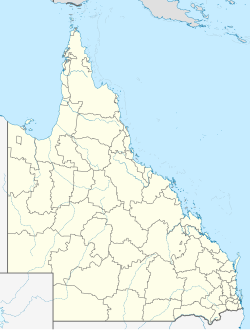| St Agnes Queensland | |||||||||||||||
|---|---|---|---|---|---|---|---|---|---|---|---|---|---|---|---|
| Coordinates | 25°08′19″S151°55′49″E / 25.1386°S 151.9302°E | ||||||||||||||
| Population | 20 (2021 census) [1] | ||||||||||||||
| • Density | 0.76/km2 (2.0/sq mi) | ||||||||||||||
| Postcode(s) | 4671 | ||||||||||||||
| Area | 26.2 km2 (10.1 sq mi) | ||||||||||||||
| Time zone | AEST (UTC+10:00) | ||||||||||||||
| Location |
| ||||||||||||||
| LGA(s) | Bundaberg Region | ||||||||||||||
| State electorate(s) | Callide | ||||||||||||||
| Federal division(s) | Flynn | ||||||||||||||
| |||||||||||||||
St Agnes is a rural locality in the Bundaberg Region, Queensland, Australia. [2] In the 2021 census, St Agnes had a population of 20 people. [1]
